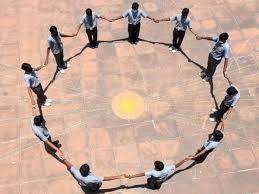Zero Shadow Day: Recently Observed

The Cosmology Education and Research Training Center (COSMOS), Mysuru, of the Indian Institute of Astrophysics recently observed ‘Zero Shadow Day’.
- Zero Shadow Day (ZSD) is an interesting celestial phenomenon that occurs twice in a year when the Sun is directly overhead and thus no shadow of any vertical object can be seen.
- This event happens for locations situated between the Tropic of Cancer and the Tropic of Capricorn.
- The ZSD phenomenon transpires when the Sun’s declination becomes equal to the latitude of the location.
- On this day, as the sun crosses the local meridian, its rays fall exactly vertically relative to an object on the ground, making it impossible to observe any shadow of that object.
- This is due to the tilt of the Earth’s axis and its rotation around the sun, causing the angle of the sun’s rays to change throughout the year, which in turn affects the lengths and directions of shadows.
- There are two zero shadow days every year, observed in places that lie between the Tropic of Cancer and the Tropic of Capricorn.
- One falls during the Uttarayan (when the Sun moves northwards), and the other is during Dakshinayan (when the Sun moves southwards).
- It will clearly be different for different places on earth.
- It lasts for a small part of a second, but the effect can be seen for a minute to a minute-and-a-half.
- The southern part of India, roughly below the latitude of Bhopal, will experience the ZSD.
- The states that can see this event are Andaman and Nicobar Islands, Kerala, Tamil Nadu, Puducherry, Karnataka, Andhra Pradesh, Telangana, Goa, Maharashtra, Odisha, Daman & Diu, Dadra & Nagar Haveli, most of Gujarat and Chhattisgarh, and the southern parts of Madhya Pradesh, Jharkhand, West Bengal, Tripura, and Mizoram.




